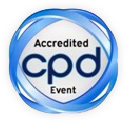
Michael C Jensen
Seattle Children’s Research Institute, USA
Title: Enhancing the synthetic IQ of CAR T-cells
Biography
Biography: Michael C Jensen
Abstract
Recent conceptual as well as technological advances in the areas of molecular immunology, gene transfer and cell processing have fostered increasingly sophisticated translational applications of adoptive T-cell therapy for oncologic disease employing genetically-modified T-lymphocytes. My laboratory’s work focuses on T-cell genetic modification for re-directing antigen specificity to tumors utilizing recent advances not only in the composition and specificity of receptor antigen recognition domains but also the evolution of multifunctional cytoplasmic signaling domains developed for these chimeric antigen receptors (CARs) that provide dual activation and co-stimulatory signaling. My group is also investigating the context of adoptive transfer with respect to the conditioning of the recipient for enhanced T-cell engraftment and expansion, the grafting of CARs on to central memory T-cells having endogenous TCR specificities for viral epitopes to which the host has robust immunity, and the provision tumor microenvironment survival capabilities. The increasingly broad array of genetic manipulations including not only transgene insertion but targeted gene knock out using engineered targeted nucleases such as TALEN’s and ZFN as well as expression regulatory constructs provides for the creation of synthetic biology of orthogonal immune responses based on gene modified T-cell adoptive transfer. The next decade of advances in this arena will depend on iterative bench-to-bedside back-to-the-bench translational studies capable of sustaining the evolution of these technologies in the context of clinical parameters relevant to the pediatric oncology patient population.

